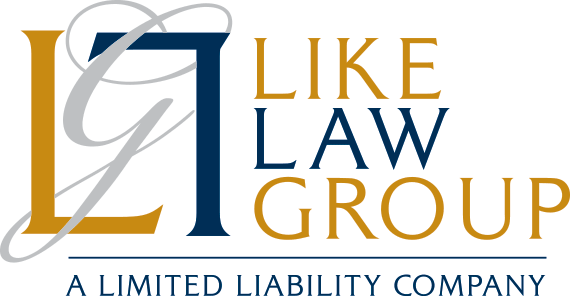Trusts are typically set up for the benefit of a trustmaker’s loved ones, a charitable organization, or a third party, with the trust money and property being distributed to the beneficiaries upon the trustmaker’s death. But there are situations in which a person may want to set up a trust to be used during their lifetime for their own benefit to maintain privacy or avoid a potential conflict of interest. In such cases, a blind trust might be appropriate.
No state or federal laws require the use of blind trusts, but they can be an effective tool for complying with laws that prohibit insider activities. Blind trusts are also used by lottery winners to remain anonymous.
How Blind Trusts Work
The “blind” part of a blind trust refers to the idea that the trustmaker, or grantor (i.e., the person who establishes the trust), remains in the dark about how the trust’s money and property are managed. Although they may lay out general parameters for the trust such as investment goals prior to creating it, once the trust is formally established, the trustee (the person designated to control the trust assets) has full discretion to handle the trust’s holdings and has no communication with the trustmaker.
The beneficiary of a blind trust also has no knowledge of what goes on with the trust. However, in most cases, the trustmaker is also the beneficiary. That is, the trust contains their personal money and property, and the trustee manages that money and property for the benefit of the trustmaker-beneficiary—the trustmaker-beneficiary just has no knowledge of, or control over, the activities of the trust.
Blind Trust versus Nonblind Trust
A blind trust differs from a normal trust in several ways. The biggest difference is that in a nonblind trust, the trustmaker has discretion over trust money and property. Often, they give explicit instructions to the trustee about how to run the trust, such as when and how to make distributions to a beneficiary. Usually, the trustmaker and trustee consult each other, and in some cases are the same person. And, while the beneficiary may be at the trustee’s mercy as far as receiving trust distributions from a blind trust, with a nonblind trust, the beneficiary may be in contact with the trustee and be aware of trust activities.
Revocable versus Irrevocable Blind Trust
Blind trusts can be irrevocable or revocable. A trustmaker has the authority to modify or terminate a revocable trust and take back control of the accounts and property upon termination. An irrevocable trust cannot be modified or terminated by the trustmaker. In other words, once the trustmaker places money and property in an irrevocable blind trust, the trustmaker permanently gives up control over that money and property.
Blind Trusts and Public Figures
Viewers of the television show Billions may be familiar with blind trusts, thanks to the character Chuck Rhoades. For anyone who has not seen the show, Chuck is a New York prosecutor known for his flawless record of winning insider trading cases. Chuck put his investments in a blind trust managed by his father to show the public that his actions as a public figure will not be influenced by his personal financial holdings.
This is a tactic employed by real-life politicians as well. While no state requires public figures to use a blind trust while in office, most states and the federal government have laws that require government employees to recuse themselves and disclose when their public duties may affect their financial interests. These laws are intended to maintain trust in public institutions, helping to defend against legislative self-dealing, or the perception of it.
Blind trusts are a workaround to real or perceived conflicts of interest. A public figure can place the money and property that might create a conflict of interest into a blind trust and turn the money and property over to an independent trustee. The official can then claim that they do not know how their actions in office will affect their private financial interests, because they have no control over those interests.
A dozen states have laws that regulate blind trusts, and these regulations must be followed closely. Federal ethics laws also have rules about what qualifies as a blind trust and how it should function to comply with the law.
Blind Trusts and Company Executives
Blind trusts are not just for government officials. Conflicts of interest can similarly impact officers, directors, and others who own shares in a company and have information not available to the public. Ownership of these shares can call into question whether a corporate insider is acting in the best interests of the company and its shareholders—as federal financial law requires them to—or in their own interests.
The Securities Act restricts the sale of shares owned by corporate insiders for as long as they are affiliated with the company. Publicly traded companies usually only allow insiders to trade company stock during “window periods.” A blind trust set up during a window period can be a mechanism for avoiding these trading limitations. The trustee of the insider’s blind trust is given guidelines for selling company stock, and the trustee is then free to execute this plan without running afoul of insider trading laws.
Blind Trusts and Lottery Winners
While politicians and company insiders may use a blind trust to avoid conflicts of interest, a lottery winner or person who receives a financial windfall may use this type of trust for a different reason: financial privacy.
Let us say that you are the lucky winner of the $1 billion Powerball lottery. As excited as you are to spread the news and raise the big cardboard check on television, you decide that you want to remain anonymous. There are plenty of reasons to keep a low profile—reporters, scammers, harassment, and requests for money from friends and family, to name just a few. But not all states allow lottery winners to remain anonymous.
If you do not live in one of those states and you want anonymity, you can use a blind trust to protect your identity. However, “blind” trust is a bit of a misnomer in this situation. It is just a regular trust that uses a name other than your legal name. You retain control of the trust and its money and property, but you are “blind” to the public because the trust is not easily linkable to you.
Don’t Go Blind into a Blind Trust—Talk to a Lawyer
Establishing a blind trust can be complex. Depending on its use, there may be federal and state laws to comply with, including rules related to conflicts and disclosures, reporting requirements, who may serve as trustee, and allowable communications between the trustee and beneficiary.
Blind trusts are set up for very specific reasons, and for them to function as intended, they must be set up carefully. If you want to prevent conflicts of interest or maintain privacy, it is vital that you work with an experienced estate planning attorney to ensure the accuracy and validity of your blind trust. Please contact us to schedule an appointment.












